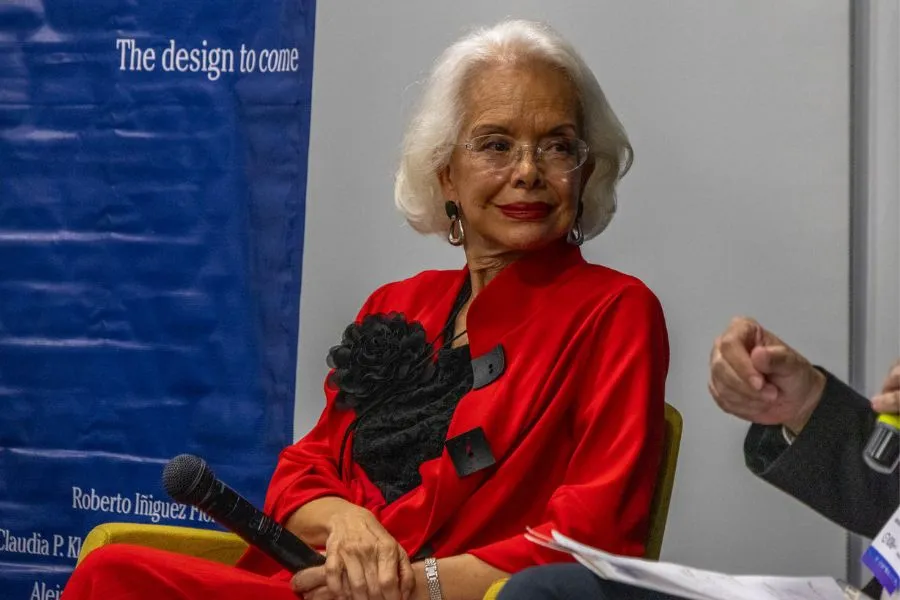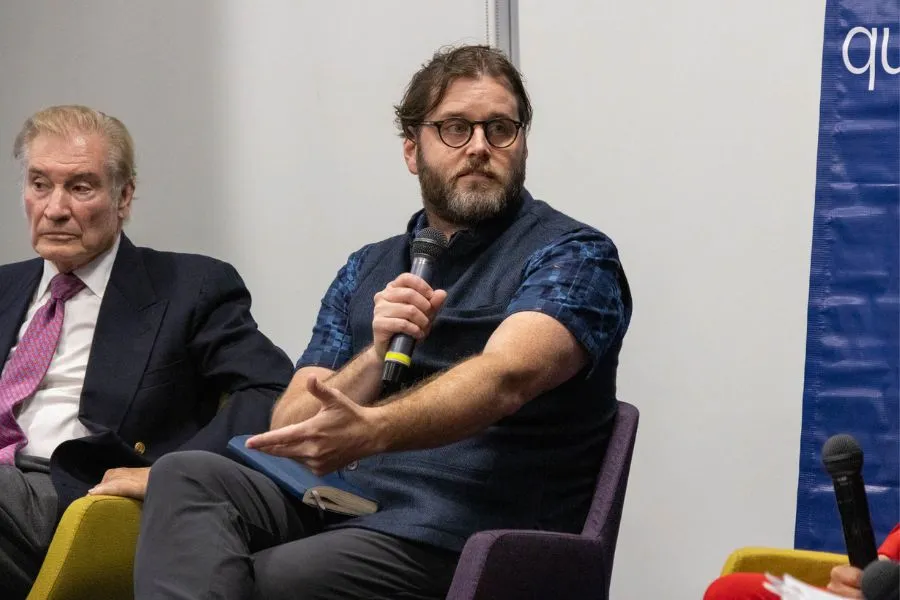Futurists from different regions have gathered at Tec de Monterrey for the annual meeting of The Millennium Project (MP) and the Ibero-American Foresight Network (RIBER) to talk about the culture of foresight and innovation and share tips on how to implement it.
The School of Architecture, Art and Design (EAAD) Futures Design Lab (FDL) hosted the annual meeting, bringing together these organizations to open a dialog on the importance of envisioning the future in a cross-cutting and cooperative manner.
“At Tec de Monterrey, we love to talk, think, and dream about the future. (...) We believe that the future can be better and that we have an important role in building it,” said Juan Pablo Murra, Rector for Higher Education at the Tec.
Xochitl Arias, national leader of the Futures Design Lab, talked about how these spaces strengthen international partnerships with world experts in strategic foresight of the future.
“We recognize the synergy between design and foresight as powerful tools to address complexity and change, and foster resilience and sustainability to this end.”

Foresight and innovation tips for the future
Among the participants at the meeting was Jerome Glenn, Executive Director, Co-Founder, and CEO of The Millennium Project, who defined the future as a changing business influenced by world events, geopolitics, and technological innovation.
This expert in analysis and research on the future shared some thought exercises and reflections to integrate foresight both in the approach to scenarios and in planning for them, including the following:
1. Cross thinking analysis
According to Glenn, this analysis involves thinking about how events, trends, ideas, concepts, or even decisions intertwine, regardless of their nature, focusing on how one may affect the other.
“It’s an easy exercise: think of any five things, and then ask yourself how the first can impact the second, the third, and so on, and then how the second affects the first or third, and so on.”
“I guarantee you’ll have insights you wouldn’t have had before, and that’s how you innovate,” Glenn says.
2. “Improving” the improvement system
He also presented another model based on analyzing the existing system in the university, company, country, or organization to measure improvements and think about how to improve that system.
“We tend to measure these types of things to understand how we are improving, but then we ask ourselves how that system works and how we can improve it,” said Jerome Glenn.
The expert recommends using software to boost the improvement systems themselves, which, in his opinion, is key to saving time and inevitably leads to innovations.
3. Creating synergy among global players
According to the futurist, it is imperative to move away from the view of the international landscape as a zero-sum game by creating synergies between countries in the form of collaborative strategies, especially around the topic of general artificial intelligence (AI).
“Currently we haven’t reached the extent of general AI, we are still in early AI, but it is envisioned that general AI may settle down by the end of this decade.”
“The problem with general AI, which is capable of thinking and acting like a human being, is that currently there aren’t any global governance standards, agreements, or conventions to deal with it once it arrives, hence the need for synergies,” he said.
“At Tec de Monterrey we love to talk, think, and dream about the future. We believe that the future can be better and that we have an important role in building it.” - Juan Pablo Murra
4. Transinstitutions are the future
The CEO of The Millennium Project stated that planning for the future must start from transinstitutions, organizations that from the outset involve visions and strategies that combine several areas and disciplines.
“Imagine the advantage of having the same group of experts and decision-makers approaching the challenges ahead from an approach that is equally political as it is economic, corporate, and even academic,” Glenn said.
The futurist also points out that having a rich variety of perspectives provides an opportunity to address the biases (positive and negative) that may exist around an issue on the agenda.
5. Let’s rethink how success is assessed
While the speaker admitted that this is already being achieved, he highlighted the importance of reducing the value of some of the more traditional measures of national growth, such as Gross Domestic Product (GDP).
“Everyone has already criticized the use of Gross Domestic Product to measure how well a country is doing. Now the question is what alternatives can be proposed?”
“It’s up to us to innovate, to propose tools that people can use to determine whether or not the future will be better 10 years from now,” Glenn said.

Futurists must be cross-cutting
During this meeting, Glenn joined futurists Stuart Candy, a professor at the Tec’s Faculty of Excellence, and Concepción Olavarrieta, Vice President of the Millennium Project and president of the Mexico Node of the same organization, to discuss the profile of futurists and their work in academia.
Roberto Íñiguez, National Dean of the School of Architecture, Art, and Design (EAAD), moderated the panelists who discussed the different ways in which studies about and for the future are being adopted by different organizations.
“The pandemic was seen as a great reset and now we are living in a very complex time, where there are many polarizing opinions (...) however, it seems that the future is our meeting point,” said Iñiguez.
Olavarrieta highlighted how academia, particularly educational institutions, has increasingly intersected with future studies.
“Among the different approaches, speculative practices, prospective studies, the intersection between all these elements has become so relevant to the world that one of these alone is no longer enough to understand or predict it,” he explained.
Candy added that it is not currently advisable to focus solely on creating predictive models, as doing so may cause important factors to be overlooked simply because they do not appear in those models due to their unpopularity.
“Today we futurists must work from different perspectives. We have to talk about the possible, the probable, and the preferable in equal measure, just as we can’t just focus only on the scientific or the political,” the professor said.

RIBER welcomes its new president
The Ibero-American Foresight Network (RIBER) is an organization dedicated to exploring future scenarios in Ibero-America. It seeks collaboration for the exchange and co-creation of knowledge in future studies and strategic foresight.
The Millennium Project is an organization that connects futurists from around the world to collaborate on improving the global perspective to build a better future.
During the meeting held at the Tec, RIBER announced its new board of directors, appointing Guillermo Gándara, professor at the School of Humanities and former Director of the Master’s Program in Strategic Foresight at the Tec, as the network’s new president.
Furthermore, there was a presentation of the book entitled Métodos Prospectivos 2, coordinated by Guillermo Gándara and published by the Futures Design Lab and the Tec futurists group with the publishing house Penguin Random House Debate collection.
This book will also be presented at the International Book Fairs in Monterrey, Guadalajara, and Mexico City.

YOU MAY ALSO WANT TO READ:





